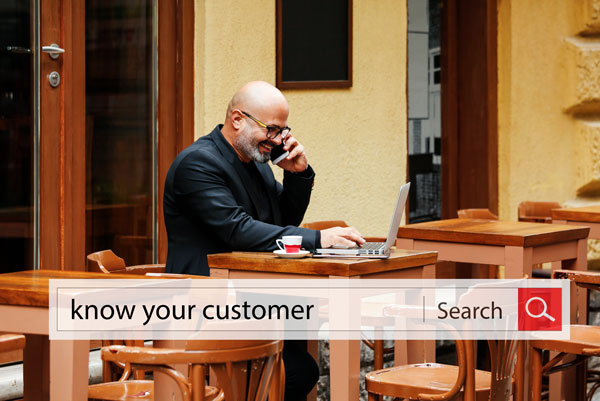The importance of knowing your customer
Posted on

Whenever we are given a chance to describe our customer, the first thing we think of is demographic traits. 22 – 55, single, female living in a particular location. But is a statistical summation good enough to make business decisions? While this was true for the early days of eCommerce, things are different today.
Thanks to social networking sites, we are also privy to behavioral trails like their interests, hobbies and shopping patterns. That’s as far as the data available goes. But what about interpreting that data? How can we understand what is driving this person behind the computer to buy or not buy our products?
Several companies create an inside-out customer-first culture for their business. It’s a difficult trait but here are some points to help you get started:
- Map your customer’s journey
Your customer may visit your store and buy the product online or shop from your app. To do this, they may have either watched your TV commercial, heard about you on the radio, read about you in the papers or seen a social recommendation from a friend. In the era of omni-channel marketing, you’ll have to cross align channels with the phase your customer is in to see if each channel is working optimally.
The steps in the sales funnel for eCommerce include Discover, Explore, Gain Interest, Purchase intent, actual purchase and after sales support. When a customer reads about you on social media, they could be any one of the above phases. You’ll have to step back to see if your social messages are catering to customers in each segment equally.
- Listen to uncover insights
Survey tools have evolved over the years to go beyond the simple Google form. Instead, they now pop up at the right stage in a customer’s journey to gather valuable feedback. The only caveat is that you need to be able to ask the right questions.
If you ask your customer what they think of a new product line you’ve launched, you’ll probably get many answers that you want to hear depending on how you’ve framed the question. Instead, if you actually look for purchase patterns and interpret analytical data, you’ll get to know what your customers are actually doing. Listening to these patterns will allow you to tweak your product offering.
- Leave assumptions in the hallway
Even if your eCommerce business is successful, there is always room for improvement. There is always the issue of cart abandonment. You’ll still have to figure why only a fraction of your traffic goes on to become your customer and what happens to the rest.
The only real way to get your answers is to speak to the customer. You’ll have to zero in on a group, go in without fixed questions and let them do the talking while you walk away with insights that can be converted into action points.
- Go beyond heat maps
The analytics heat maps from your eCommerce website tends to show you a rough picture of where your customers are looking. But what does it tell you about their real time navigational choices? How are they examining products and charting their decision making journey. Which part of the cart is throwing people off? Are the taxes or shipping charges coming as a surprise? Are people unable to use their coupon code? Is your payment gateway (link) working as it promised?
To know answers to such questions observe how customers work in a focus group rather than just historic data.
Conclusion: After connecting data points with individual behaviour, the ongoing thing that you need to do is keep talking to your customers and check for feedback. The proactive approach to understanding your customer will be the difference between you and your nearest competitor.
